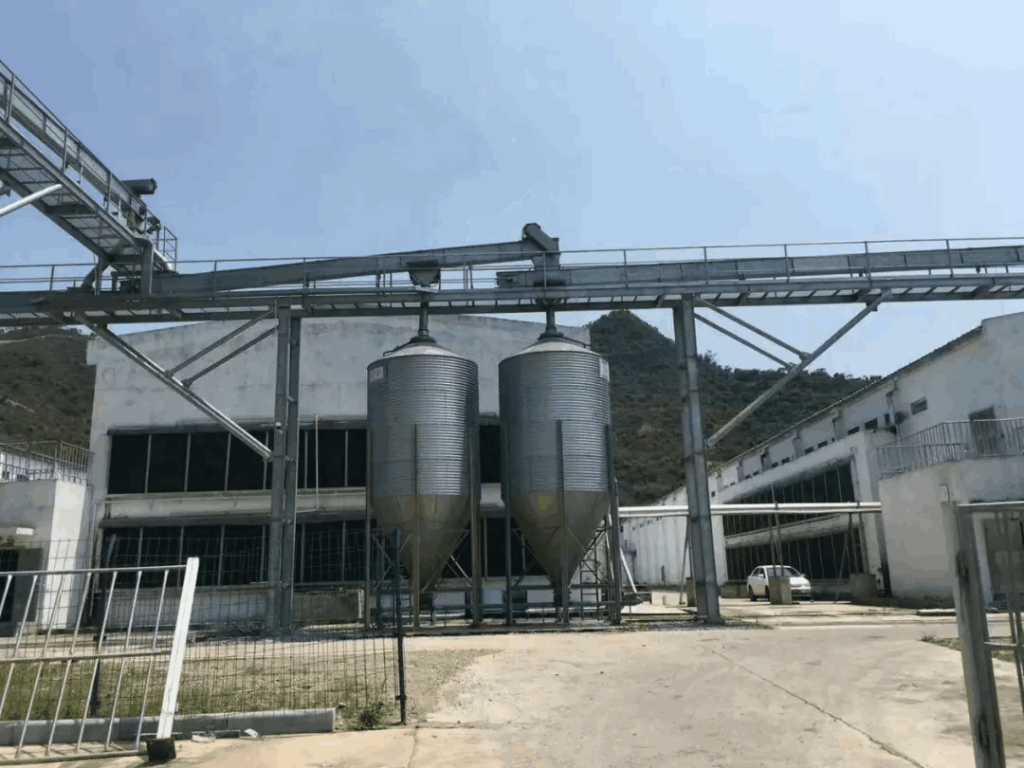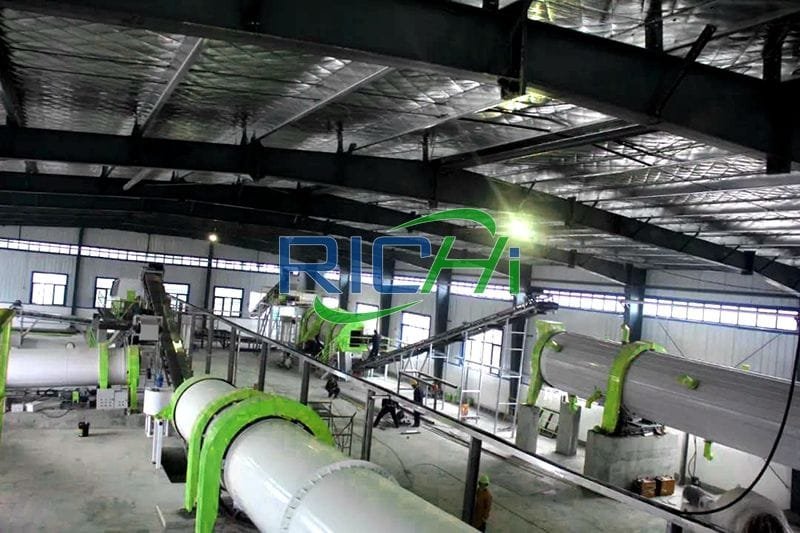Establishing a chicken manure fertilizer production line in the United States demands careful consideration of raw material requirements to ensure high product quality and compliance with regulatory standards. This article outlines the essential raw material requirements and considerations for setting up a Chicken Manure Fertilizer Production in USA.
Primary Raw Material: Chicken Manure
Source and Quality
Chicken manure, the primary raw material, must be sourced from reliable poultry farms. Ideally, the manure should be fresh and free of contaminants such as plastics, metals, or other non-organic materials. Consistency in the quality of the manure is crucial for maintaining uniform product quality throughout the production process.
Moisture Content
Fresh chicken manure typically contains 70-80% moisture. To ensure efficient processing, the moisture content should be reduced to about 30-40%. This may involve pre-treatment processes or blending with drier materials to achieve the desired moisture level.
Nutrient Content
Regular analysis of the nutrient content in chicken manure is essential. Typical nutrient values include:
- Nitrogen (N): 1.5-3%
- Phosphorus (P): 1-2%
- Potassium (K): 0.8-1.5%
Consistency in these nutrient levels is important for producing a standardized fertilizer product that meets market expectations.
Pathogen and Weed Seed Content
Raw chicken manure may harbor pathogens and weed seeds. The production process should be designed to eliminate these risks through appropriate composting or heat treatment techniques.

Supplementary Raw Materials
Carbon-Rich Materials
To balance the high nitrogen content of chicken manure, carbon-rich materials are often added. Common options include:
- Sawdust
- Straw
- Rice hulls
- Corn stalks
These materials help adjust the Carbon-to-Nitrogen (C) ratio to the ideal range of 25-30:1, which is critical for effective composting and nutrient balance in the final product.
Mineral Additives
To enhance the nutrient profile of the fertilizer, mineral additives may be necessary, such as:
- Rock phosphate for additional phosphorus
- Potassium sulfate to increase potassium levels
- Lime or dolomite for pH adjustment and the addition of calcium/magnesium
Microbial Inoculants
Beneficial microorganisms can be introduced to improve the composting process and the quality of the final product. These might include specific strains of bacteria and fungi known for their ability to break down organic matter.
Raw Material Preparation Requirements
Grinding and Screening
All raw materials should be ground to a uniform particle size, typically less than 5mm. Screening equipment is also essential to remove oversized particles and any remaining contaminants.
Mixing Capabilities
The production line should be equipped to thoroughly mix chicken manure with supplementary materials. Uniform mixing is crucial for maintaining consistent product quality.
Moisture Adjustment
The facility may need equipment to either add water or dry the mixture to achieve the optimal moisture content for composting or pelletizing.
Regulatory Considerations
USDA National Organic Program (NOP) Standards
If the goal is to produce organic fertilizer, all raw materials must comply with NOP standards, which prohibit the use of synthetic materials and genetically modified organisms.
EPA Regulations
Raw materials must meet Environmental Protection Agency (EPA) guidelines, particularly concerning pathogen reduction and heavy metal content.
State-Specific Regulations
Some states may have additional requirements or restrictions on the raw materials used in fertilizer production. It’s crucial to consult with local agricultural departments for specific guidelines.
Quality Control Measures for Raw Materials
Testing and Analysis
A rigorous testing program should be in place for all incoming raw materials. Regular analyses should include:
- Nutrient content
- Moisture levels
- Pathogen presence
- Heavy metal concentrations
Traceability
Establishing a traceability system for all raw materials is essential for quality assurance and for managing potential recall situations. This system ensures that each batch of raw material can be traced back to its source.
Storage Requirements
Proper Storage Facilities
Adequate storage facilities are necessary to maintain the quality of raw materials. Covered storage areas are essential to protect materials from rain and contamination, preserving their integrity until they are used in production.
Environmental Considerations
Odor Control
Chicken manure can produce strong odors, so effective odor control measures should be implemented in storage and handling areas to minimize environmental impact and maintain worker comfort.
Dust Management
Dry materials, such as sawdust or mineral additives, can generate dust. Dust control systems should be in place to protect worker health and comply with air quality regulations.
Leachate Management
Storage areas for raw materials should be designed to prevent leachate from contaminating soil or water sources, thereby protecting the environment.
Sourcing Strategy
Local Sourcing
Whenever possible, raw materials should be sourced locally to reduce transportation costs and the associated carbon footprint. Building strong relationships with local poultry farms and agricultural suppliers is advantageous for consistent supply.
Supply Contracts
Long-term contracts with suppliers can help ensure a steady supply of raw materials, which aids in managing costs and maintaining consistent product quality.
Diversification
While chicken manure is the primary raw material, having multiple sources and types of supplementary materials can provide flexibility and resilience in production.
Handling and Safety Requirements
Personal Protective Equipment (PPE)
Workers handling raw materials should be equipped with appropriate PPE, including gloves, dust masks, and protective clothing, to ensure their safety and well-being.
Training
Comprehensive training programs should be implemented to educate workers on the correct handling of raw materials, including safety procedures and hygiene practices.
Equipment Maintenance
Regular maintenance of material handling equipment is essential to prevent contamination and ensure efficient processing.
Conclusion
Setting up a chicken manure fertilizer pellet production line in the United States requires a detailed approach to raw material sourcing, preparation, and processing. The quality and consistency of chicken manure are paramount, but supplementary materials play a critical role in producing a balanced and effective fertilizer product.
Compliance with regulatory standards set by the USDA and EPA is essential for legal operation and market acceptance. Implementing stringent quality control measures throughout the production process ensures a high-quality end product that meets both regulatory requirements and customer expectations.
Environmental considerations, such as odor and dust control, are vital for the sustainable operation of the production facility. By effectively managing these aspects, a chicken manure fertilizer production line can operate efficiently while minimizing its environmental impact.
Ultimately, the success of a chicken manure fertilizer production line in the USA depends on a well-planned approach to raw material management and processing. By adhering to these requirements, producers can create a valuable product that supports sustainable agriculture while efficiently utilizing an important agricultural waste stream.
For details please contact: pellet making machine
WhatsApp:86 138 3838 9622
Email:enquiry@richipelletmachine.com
